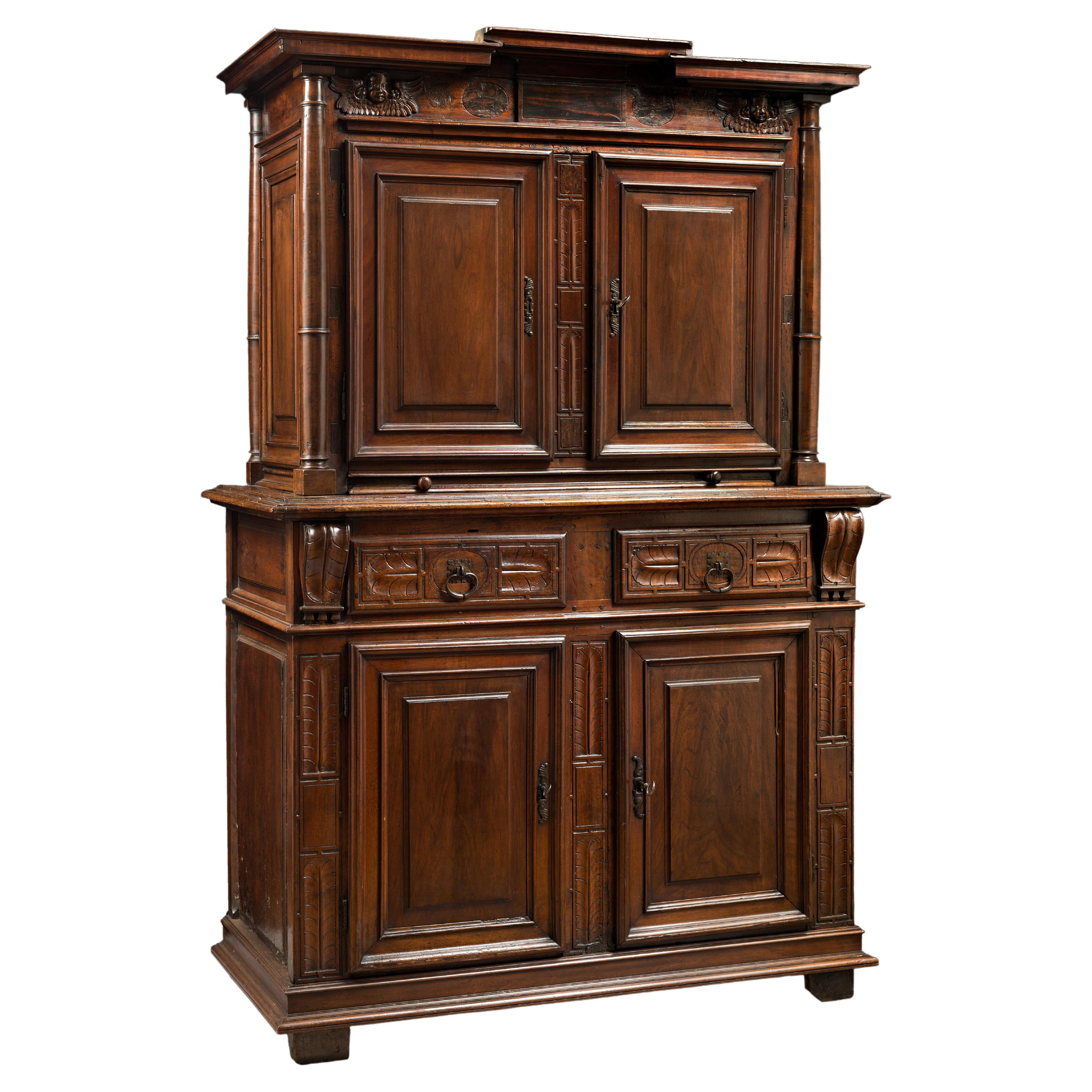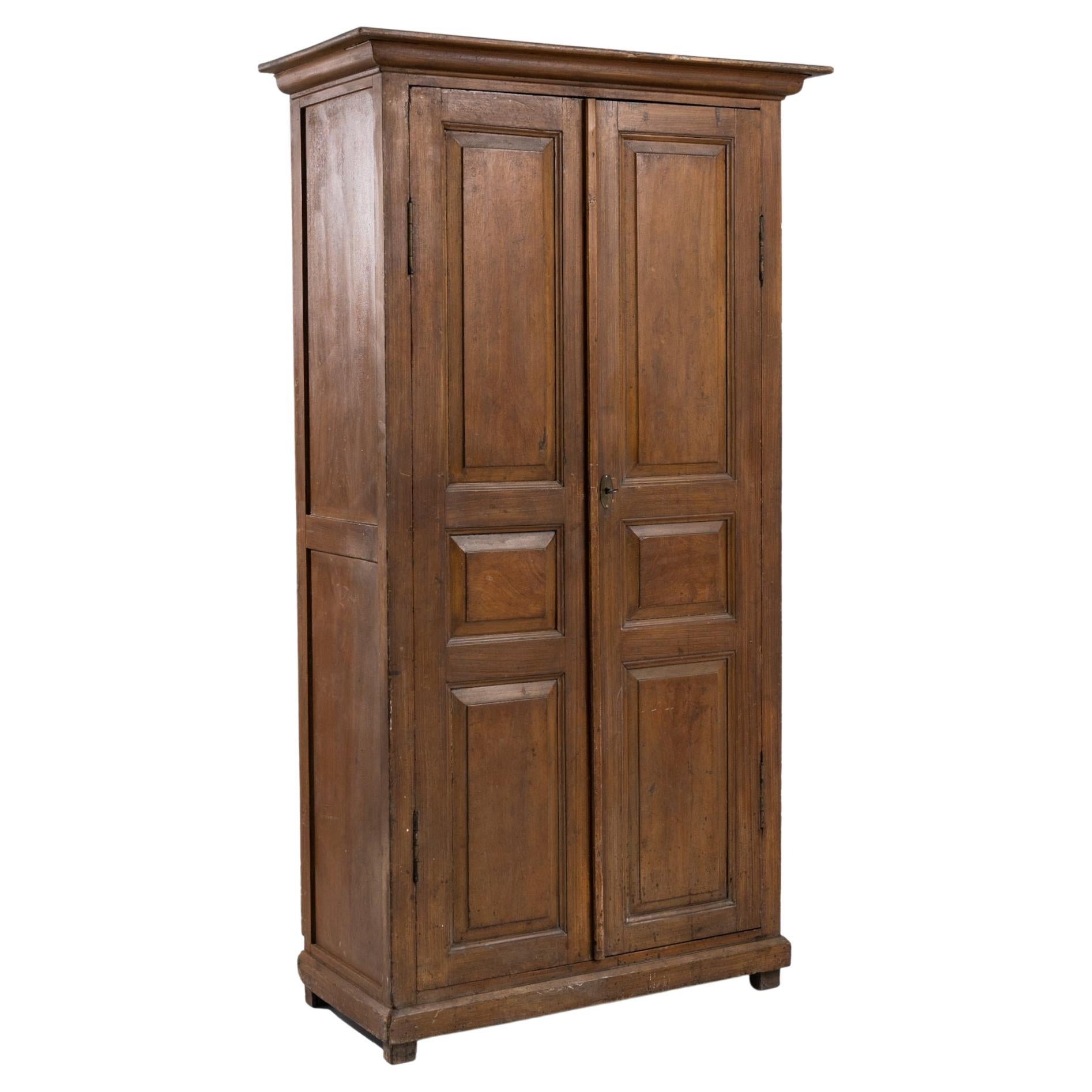Items Similar to SECOND HALF OF THE 16th CENTURY CHESTNUT CHEST
Want more images or videos?
Request additional images or videos from the seller
1 of 12
SECOND HALF OF THE 16th CENTURY CHESTNUT CHEST
About the Item
The chest in question is an elegant piece of furniture made entirely of chestnut wood. Its manufacture dates back to the Renaissance, around the second half of the 16th century, by Tuscan artisans. The chest stands out for its fine workmanship and ornamental details. On the sides it features geometric inlays, which add a touch of refinement to the chest and testify to the skill of the master craftsmen of the period. The base of the chest is overhanging, that is, it protrudes compared to the rest of the structure, and is also carved. The beauty and careful workmanship of this chest offers an opportunity to appreciate the art and craftsmanship of the Tuscan Renaissance.
Measurements: HxWxD 61 x 163 x 57cm.
- Dimensions:Height: 24.02 in (61 cm)Width: 64.18 in (163 cm)Depth: 22.45 in (57 cm)
- Style:Renaissance (Of the Period)
- Materials and Techniques:
- Place of Origin:
- Period:
- Date of Manufacture:1500
- Condition:Wear consistent with age and use. We remind you that the authorization of the Fine Arts is required for export.
- Seller Location:Firenze, IT
- Reference Number:1stDibs: LU7189238727532
About the Seller
5.0
Vetted Seller
These experienced sellers undergo a comprehensive evaluation by our team of in-house experts.
1stDibs seller since 2022
12 sales on 1stDibs
Typical response time: 10 hours
- ShippingRetrieving quote...Ships From: Firenze, Italy
- Return PolicyA return for this item may be initiated within 1 day of delivery.
More From This SellerView All
- 16th Century Renaissance Florentine ChestLocated in Firenze, FIBeautiful model of chest in carved walnut with features typical of the late sixteenth century in Florence with the addition of parts decorated with grotesque lean tempera on a chalky background. Used as a small travel chest, it is complete with an antique lock...Category
Antique 16th Century Italian Renaissance Cabinets
MaterialsWood, Walnut
- SECOND HALF OF THE 18th CENTURY CHEST IN POPLAR AND VENEEREDLocated in Firenze, FIElegant chest of drawers in poplar wood veneered in walnut and olive wood, small in size and with a refined design. The top is rectangular, while the base is supported by four slight...Category
Antique Mid-18th Century Italian Louis XV Dressers
MaterialsBronze
- 16th CENTURY GUARD'S STOOLLocated in Firenze, FITypical stool with backrest and curved legs in solid walnut wood with dark patina. This type of bench is used in guard posts, for this reason the seat is small and uncomfortable, to ...Category
Antique 16th Century Italian Renaissance Stools
MaterialsWood, Walnut
- Late 16th Century Siena Sacristy Chest of DrawerLocated in Firenze, FIBeautiful small chest of drawers with four drawers in carved walnut with tiles both on the drawers and on the sides. Typical Tuscan cabinet-making from the end of the 16th century, ...Category
Antique 16th Century Italian Commodes and Chests of Drawers
MaterialsWalnut
- 16th CENTURY MARBLE SCULPTURE OF A YOUNG HERCULESLocated in Firenze, FISplendid sculpture in white Carrara marble depicting a young Hercules holding the world. Originally, the work was conceived to be used as a caryatid at the beginning of a sumptuous m...Category
Antique 16th Century Italian Renaissance Figurative Sculptures
MaterialsCarrara Marble
- SECOND HALF OF THE 18th CENTURY WALNUT BRIAR CABINETLocated in Firenze, FIBeautiful cabinet with two doors in soft wood, with walnut briar tiles and blonde half-luster finish. The carved decoration is linear and geometric, visible both on the front and on ...Category
Antique Late 18th Century Italian Sideboards
MaterialsNutwood
You May Also Like
- 16th Century Renaissance Two-Bodied CabinetLocated in Saint-Ouen, FRFormer collection Altounian At the beginning of the reign of Henri II (1547-1559) the furniture’s ornamentation evolves. The few medieval motifs that were still used are eventually relinquished. Furniture becomes more sober showcasing moulded panels and perfect architecture. Cabinet-makers use ornaments such as curved fluted or plain columns, feather quills, roses or winged putti heads. High-relief carving becomes more scarce and compositions lighter. To that end cabinet-makers draw inspiration from Fontainebleau motifs filtering them and adapting them to French taste. During this period cabinet-makers turn into a kind of architects. Indeed the architectural balance of furniture is the centre of their concerns. The study of Antic formulas is then a necessity. From this care given to proportions appear refined cabinets with pure lines. This style is characteristic of the reign of Henri II and disappears soon after under the regency of Catherine de Medici (1560-1574) when an abundance of high and low-relief ornaments comes back on furnitures. This two-bodies cabinet...Category
Antique 16th Century French Renaissance Cabinets
MaterialsWalnut
- 16th Century French Carved Renaissance CabinetLocated in Saint-Ouen, FRRare carved Renaissance cabinet Period : 2nd half 16th century, ca. 1570 Origin : France, Burgundy or Languedoc This cabinet embody the produ...Category
Antique 16th Century French Renaissance Cabinets
MaterialsWalnut
- 16th Century Period Renaissance Tuscan Walnut CredenzinoLocated in Vero Beach, FL16th Century Period Renaissance Tuscan Walnut Credenzino Italian 16th/17th century Renaissance walnut small Credenza with a rectangular top above a single drawer centered over a s...Category
Antique 16th Century Italian Renaissance Credenzas
MaterialsWalnut
- 16th Century French Walnut Cabinet with Marble InlaysLocated in Saint-Ouen, FROn the left post of the lower body, is written the date 1596 in a cartouche This cabinet has two bodies. The upper part, set back, is moulded and carved. At the bottom, the cabine...Category
Antique 16th Century French Renaissance Cabinets
MaterialsWalnut
- 16th Century Portuguese Wooden CabinetLocated in High Point, NCHandsome and dignified, this antique Provincial cabinet combines understated simplicity with a beautiful auburn finish. Made in Portugal in the 16th century, paneled doors unlock wit...Category
Antique 16th Century Portuguese Country Cabinets
MaterialsWood
- 16th Century Prie-Dieu 'Praying Kneeler' Made of Walnut and BurlLocated in North Miami, FL16th Century Italian Prie-dieu (Praying Kneeler) made of Italian walnut and burl wood.Category
Antique 16th Century Italian Renaissance Cabinets
MaterialsWood, Walnut, Burl
Recently Viewed
View AllMore Ways To Browse
Woven Rattan Cabinet
2 Door 2 Drawer
Chinese Antique Display Shelves
Venetian Shelves
Burlwood Side Cabinet
Mcm Side Cabinet
Small Burlwood Cabinet
1950s French Provincial China Cabinet
Japanese Hallway Tansus
Brutalist Italian Chestnut
Armoires Et Penderies
Campaign Drift White
Weber Grill
Antique Painted Wood Cabinets
Cool Shelves
Linenfold Carved
Shelf Glass Door
Large German Cabinet





